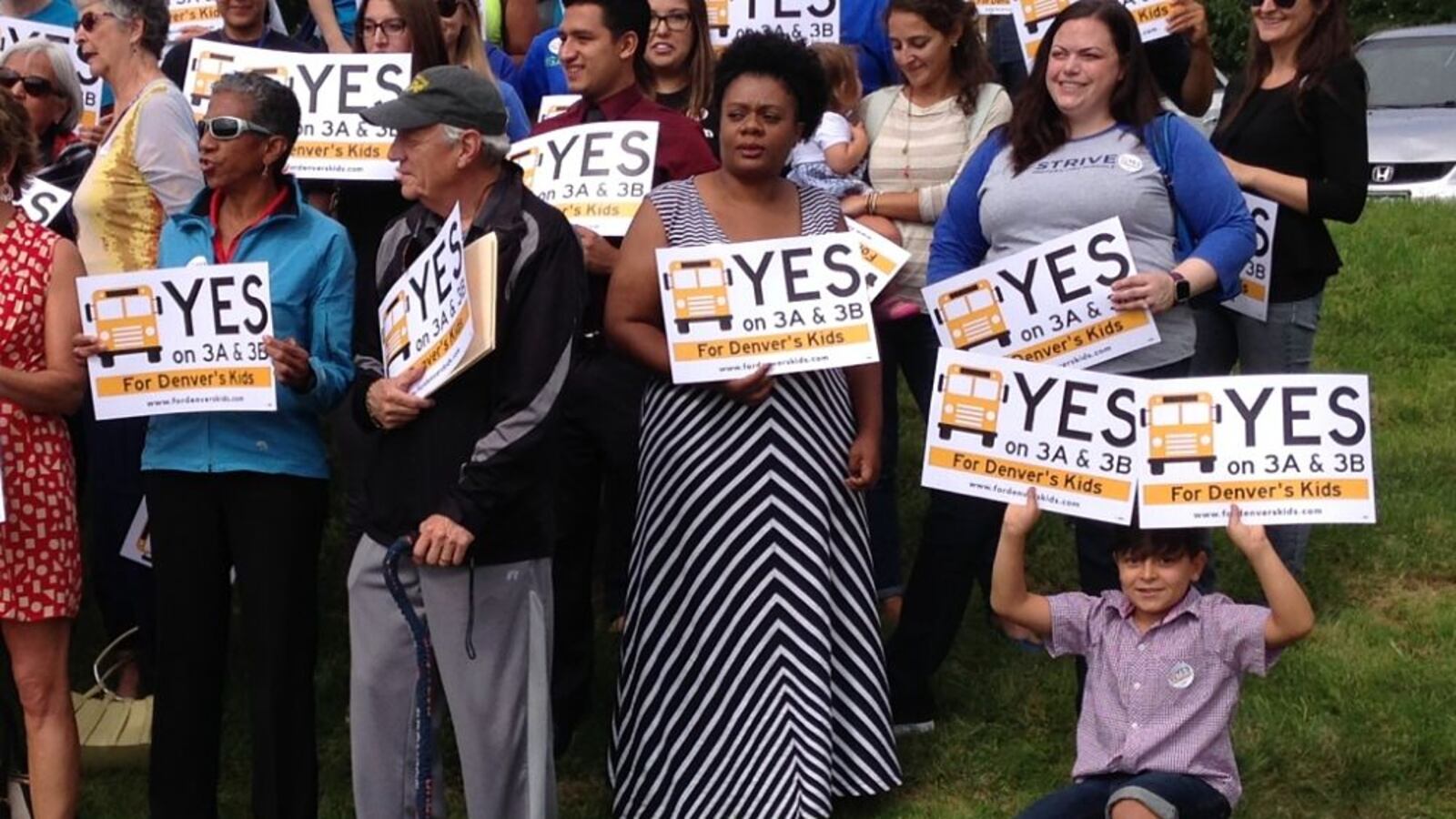The campaign to persuade Denver voters to approve raising $628 million in taxes to benefit schools kicked off Friday morning on a grassy hill in front of West High School, a day after the school board approved the language that will appear on ballots in November.
Voters will be asked to approve a $572 million bond issue to build new schools and upgrade existing ones, and a $56.6 million mill levy override to pay for programs and staff.
Because of rising property values and decreasing district debt, the bond issue isn’t expected to raise the current property tax rate, Denver Public Schools officials said.
The mill levy override is expected to cost taxpayers an additional $9 a month, or $110 a year, for a Denver home valued at $329,000, which is the median price in the gentrifying city.
“Denver voters have been amazing to public education,” board president Anne Rowe said at the kickoff event as about 80 people stood behind her, holding signs that read, “Yes on 3A and 3B.”
She said she expects that will continue, especially given the progress DPS has made. As proof, she cited the fact that the district graduated more students last year than ever before.
Overall, the district’s aggressive reforms have produced mixed results. While graduation rates are up and DPS outperformed many districts with similar numbers of low-income kids on state reading and math tests last year, wide achievement gaps persist between poor students and their wealthier peers and between students of color and white students.
This is shaping up to be a potentially record year for Colorado school districts, including neighboring Aurora and Jeffco, seeking taxpayer support.
The $572 million in bond funding is earmarked for a variety of projects, including installing cooling systems in the district’s hottest schools and significantly remodeling “baby boomer-era” buildings such as Lincoln High and George Washington High.
The $56.6 million in mill levy override money would go toward hiring more school psychologists, social workers and nurses; investing in increasing the diversity of the teacher workforce; expanding a program in which teachers coach their peers; and paying for more training for teachers who teach the district’s youngest readers, among other uses.
“This is certainly a critical area of need,” said retired DPS educator Patricia Slaughter. Just 31 percent of Denver third-graders met or exceeded expectations on last year’s state reading tests.
Colorado funds public schools at a lower level than many other states. DPS estimates that because state lawmakers reduced education funding in a cost-saving move several years ago, the district loses out on $90 million a year it would have otherwise gotten.
“We’ve done remarkable work with the amount of funding we have,” board member Mike Johnson said Thursday night before members approved the ballot language. But he said in order for the district to continue that work, “we’re going to have to spend more money.”
Denver voters traditionally have been receptive to tax increases to support schools. Voters approved a bond issue in 2008, and both a bond issue and mill levy override in 2012.

